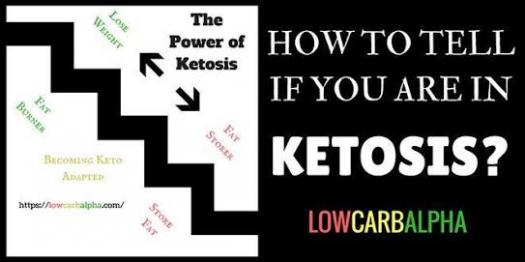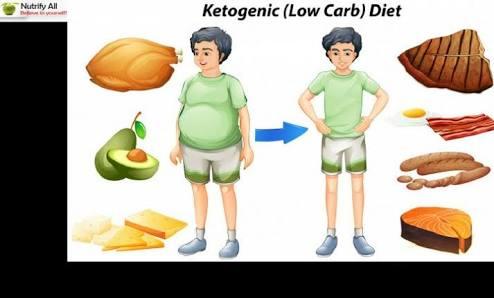Are You A Fat Storer Or Fat Burner?

We have various types of fat, each of the fat have the same variation of chemical content or structure, you should know that all fat ate derived from fatty acid, most fats are glycerides, what did you know about fat burning and fat store, take a quiz on fat (triglycerides).
- 1.
The properties of any specific fats ..................... depend on the particular fatty acid that constitute it?
- A.
Glycerol
- B.
Molecule
- C.
Acid
- D.
Chemical
Correct Answer
B. MoleculeExplanation
The properties of any specific fats depend on the particular fatty acid that constitutes it because fats are composed of molecules called fatty acids. Different fatty acids have different chemical structures and properties, such as melting point, stability, and texture. Therefore, the specific fatty acid composition of a fat determines its characteristics and behavior. Glycerol is a component of fats, but it does not determine the properties of fats. Acid and chemical are not directly related to the properties of fats.Rate this question:
-
- 2.
Fat may specifically refer to lipids that are ...................... in room temperature?
- A.
Hard
- B.
Soft
- C.
Liquids
- D.
Solids
Correct Answer
D. SolidsExplanation
Fat refers to lipids that are solid at room temperature. This is because fats are composed of saturated fatty acids, which have a high melting point. When these fatty acids are solid, they form a solid fat. In contrast, oils are composed of unsaturated fatty acids, which have a lower melting point and remain in a liquid state at room temperature. Therefore, the correct answer is "Solids."Rate this question:
-
- 3.
Fats is an important ..................... for many forms of life?
- A.
Protein
- B.
Carbonate
- C.
Foodstuff
- D.
Glycerol
Correct Answer
C. FoodstuffExplanation
Fats are considered an important foodstuff for many forms of life. They provide a concentrated source of energy and are necessary for the absorption of certain vitamins. Fats also play a role in hormone production, insulation, and protection of organs. Therefore, the correct answer is "Foodstuff".Rate this question:
-
- 4.
Fats are necessary part of diet of most ......................?
- A.
Saturated
- B.
Lenolenic acid
- C.
Carboxyl
- D.
Heterotrophs
Correct Answer
D. HeterotrophsExplanation
Heterotrophs are organisms that cannot produce their own food and rely on consuming other organisms for energy. Fats are an essential part of their diet as they provide a concentrated source of energy. Therefore, it is necessary for heterotrophs to include fats in their diet in order to meet their energy requirements.Rate this question:
-
- 5.
Unsaturated fats can be divided in to how many?
- A.
2
- B.
5
- C.
3
- D.
4
Correct Answer
A. 2Explanation
Unsaturated fats can be divided into two categories: monounsaturated fats and polyunsaturated fats. Monounsaturated fats have one double bond in their chemical structure, while polyunsaturated fats have multiple double bonds. This division is based on the number of double bonds present in the fat molecules. Therefore, the correct answer is 2.Rate this question:
-
- 6.
............ fats are common in nature?
- A.
Acid
- B.
Cis
- C.
Trans
- D.
Amino
Correct Answer
B. CisExplanation
Cis fats are common in nature because they have a similar molecular structure to the naturally occurring unsaturated fatty acids found in plants and animals. Cis fats have hydrogen atoms on the same side of the carbon chain, allowing them to bend and form kinks in their structure. This kinked structure makes cis fats more fluid and flexible, which is beneficial for biological processes. Trans fats, on the other hand, have hydrogen atoms on opposite sides of the carbon chain, resulting in a straighter structure that is less common in nature. Amino acids are the building blocks of proteins and do not directly relate to the question.Rate this question:
-
- 7.
Many cell types can use either .................. or fatty acids?
- A.
Glycerol
- B.
Glucose
- C.
Vitamin
- D.
Carbohydrates
Correct Answer
B. GlucoseExplanation
Many cell types can use either glucose or fatty acids as a source of energy. Glucose is a simple sugar that can be easily broken down in the cell's cytoplasm through a process called glycolysis, producing ATP molecules that can be used for various cellular functions. Fatty acids, on the other hand, are broken down in the mitochondria through beta-oxidation to generate ATP. While both glucose and fatty acids can be utilized by cells, the preference for one over the other can vary depending on factors such as the cell type, availability of substrates, and metabolic demands.Rate this question:
-
- 8.
Fatty acids can also be use as a source of ............... to the brain?
- A.
Solid
- B.
Liquid
- C.
Fuel
- D.
Blood
Correct Answer
C. FuelExplanation
Fatty acids can be used as a source of fuel to the brain. The brain is highly dependent on glucose for energy, but it can also utilize fatty acids as an alternative energy source. When glucose levels are low, such as during fasting or prolonged exercise, the body breaks down stored fats into fatty acids, which can then be converted into ketones. Ketones can cross the blood-brain barrier and provide fuel to the brain cells, ensuring their proper functioning. Therefore, fatty acids can serve as an important fuel source for the brain when glucose is not readily available.Rate this question:
-
- 9.
All fats are derivatives of fatty acids and ........................?
- A.
Trans
- B.
Carbonate
- C.
Cis
- D.
Glycerol
Correct Answer
D. GlycerolExplanation
Glycerol is a type of alcohol that is a component of many lipids, including fats. It is derived from fatty acids through a process called esterification. Therefore, it can be concluded that all fats are derivatives of fatty acids and glycerol.Rate this question:
-
- 10.
Fats may be used in food ................... as a syndrome for lipids?
- A.
Science
- B.
Chemical
- C.
Energy
- D.
Amino acid
Correct Answer
A. ScienceExplanation
Fats are commonly used in food science as a synonym for lipids. Lipids are a broad class of molecules that include fats, oils, and other substances that are insoluble in water. They play a crucial role in the structure and function of cells, as well as in energy storage and insulation. Therefore, the use of the term "fats" in food science is often interchangeable with the term "lipids."Rate this question:
-
Quiz Review Timeline +
Our quizzes are rigorously reviewed, monitored and continuously updated by our expert board to maintain accuracy, relevance, and timeliness.
-
Current Version
-
Mar 20, 2023Quiz Edited by
ProProfs Editorial Team -
Jul 06, 2018Quiz Created by
Tunde1995











